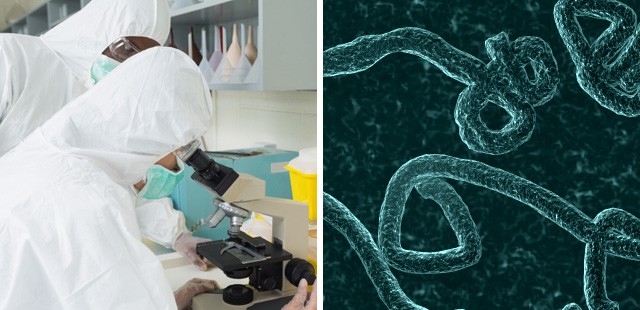 The University of Kansas Hospital has isolated a patient who arrived with a high fever and other serious, Ebola-like symptoms early Monday morning. Tests are underway to determine a diagnosis, hospital officials said.
The University of Kansas Hospital has isolated a patient who arrived with a high fever and other serious, Ebola-like symptoms early Monday morning. Tests are underway to determine a diagnosis, hospital officials said.
The patient, who was not identified, worked on a medical boat off the west coast of Africa recently, the hospital said. As a result, staff met the person, who called the hospital before arriving, wearing personal protection equipment and immediately isolated the patient on a special infectious disease unit.
Dr. Lee Norman, the hospital’s chief medical officer, said the patient has a low or moderate risk of Ebola. There are many other diseases that fit the patient’s symptoms, but the hospital is following guidelines from the Centers for Disease Control and Prevention (CDC) to determine if the patient has Ebola, Dr. Norman said. Doctors expect blood samples to be returned by 5 or 6 p.m. on Tuesday.
The patient is being cared for by a team of six health professionals at all times, who will not treat other patients until a diagnosis and treatment plans are completed. The hospital says that regardless of a diagnosis, this patient does not pose a health risk to other patients, staff or visitors at the hospital. In addition to being isolated in an area with its own ventilation system, all bedding and waste will be isolated from regular hospital material per federal CDC and state guidelines, hospital officials said.
The case is the second time a patient has been tested for Ebola at KU Hospital. About seven weeks ago, a 23-year-old man who had been in Sierra Leone in Western Africa showed up at the hospital worried that he had Ebola. That man had brutal chills, fever and muscle aches, all symptoms of Ebola. But tests showed he was having a severe bout of malaria and never had Ebola.
In a statement earlier this month from the Mid-America Regional Council, 10 Kansas City area health departments said they were prepared to handle infectious diseases like Ebola, which has killed more than 4,000 people in West Africa, including nearly 250 healthcare workers. The virus is spread through direct contact with an infected person’s blood or body fluids, like sweat and saliva. It isn’t spread through the air.
Public health experts emphasize two fundamental strategies for stopping an infectious disease outbreak: Having adequate facilities to effectively isolate and care for infected people, and having enough trained personnel to identify, locate, and quarantine people who have been in contact with someone who’s infected.
KU Hospital has designated three intensive-care isolation rooms fo r Ebola patients. The rooms have negative-air-pressure ventilation systems, so air from the room won’t escape when the door is opened. As further protection, each isolation room has an anteroom; if its door is left open more than 30 seconds, an alarm sounds.
Anyone going into the isolation room will suit up in an impermeable gown, gloves that go up to the forearms, booties, a surgical mask and a plastic face shield. Hospital officials said about 15 nurses from the facility have volunteered for special training in the safe management and care of Ebola patients.
Meanwhile, health authorities in Texas have just identified the Dallas-area nurse infected with Ebola as 26-year-old Nina Pham, a 2010 graduate of Texas Christian University’s nursing program. Pham, whose condition is listed as “clinically stable,” contracted the virus while caring for Ebola patient Thomas Eric Duncan, the first person ever diagnosed with the disease on US soil.
